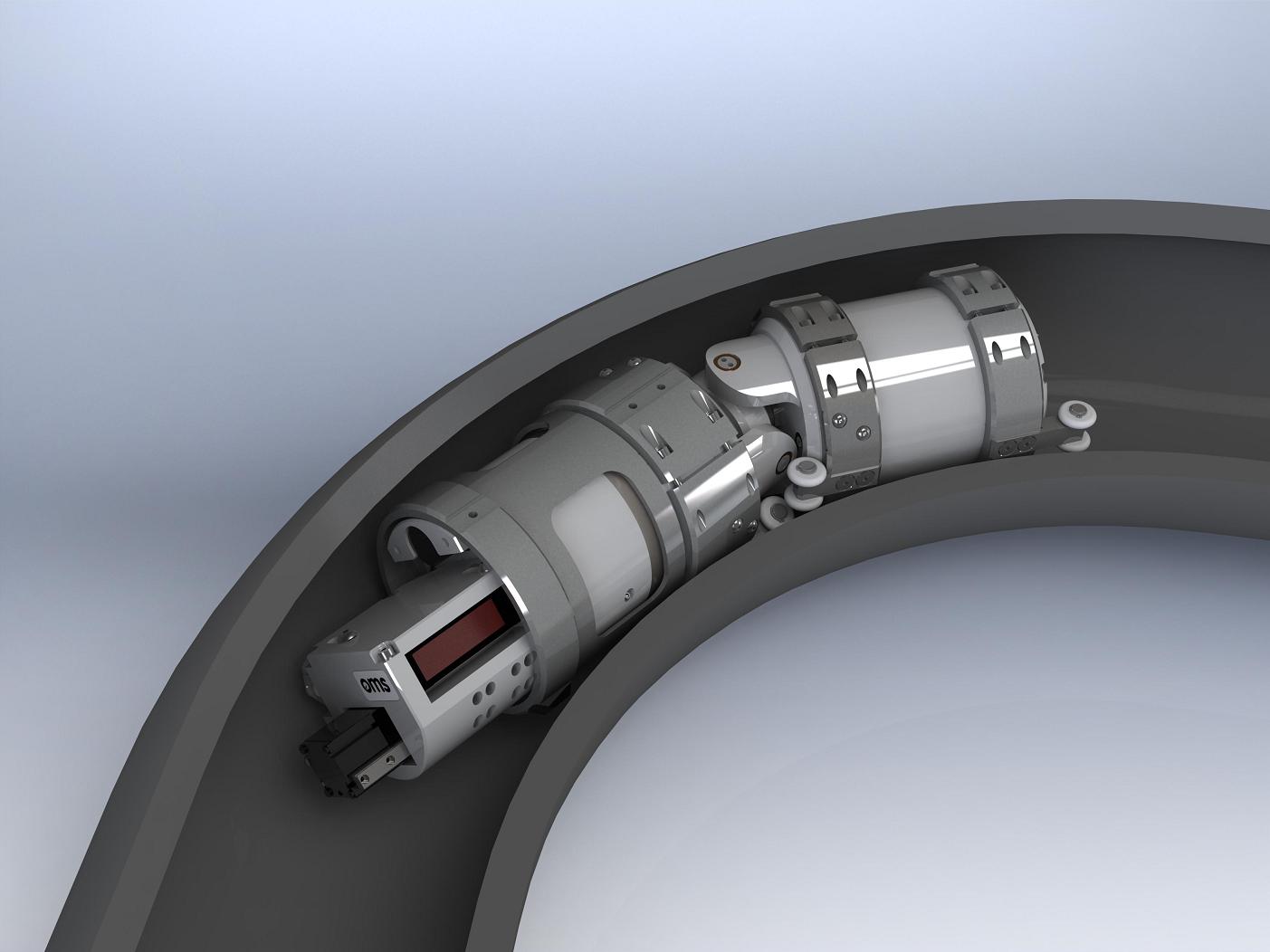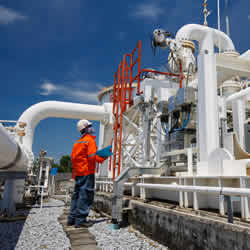Making Certain Longevity with Thorough Pipeline Welding Inspection
Making Certain Longevity with Thorough Pipeline Welding Inspection
Blog Article

Best Practices for Pipeline Welding Assessment: Methods, Specifications, and Treatments to Achieve Quality Control and Conformity
Effective pipeline welding examination is vital for making certain the honesty and security of essential framework. By employing a mix of strategies such as visual examination and advanced non-destructive screening approaches, together with adherence to developed sector criteria like those from ASME and AWS, organizations can considerably enhance their quality control processes. Nevertheless, the implementation of these finest methods poses various difficulties that warrant cautious consideration. Understanding the intricacies associated with each stage of evaluation is essential to achieving compliance and dependability in pipeline systems. What certain techniques can be used to navigate these challenges effectively?
Value of Welding Evaluation
The honesty of welded joints is paramount in making certain the safety and dependability of pipeline systems. Correct welding strategies and detailed examination processes are vital to protect against failings that can result in devastating occurrences, ecological damage, and loss of life. Pipeline Welding Inspection. Welding assessment functions as a preventative measure, recognizing flaws such as fractures, porosity, and insufficient blend before they intensify into severe issues
In addition, pipe systems commonly operate under high stress and extreme conditions, making the top quality of welds also a lot more vital. Regulatory conformity is one more significant element, as various standards dictate the quality control processes that have to be complied with in pipe building and construction and upkeep. Failing to conform can cause financial losses and legal ramifications.

The function of welding examination extends beyond plain verification of workmanship; it includes the guarantee of long-lasting operational stability. This entails a methodical strategy that includes not just aesthetic evaluations however additionally advanced non-destructive screening techniques. Inevitably, reliable welding assessment is an investment in the durability and security of pipe systems, guaranteeing they operate as intended while lessening risks connected with product shortages.
Secret Assessment Techniques

Aesthetic assessment, typically the first line of defense, permits the recognition of surface area problems such as cracks, damages, and porosity. Ultrasonic testing employs high-frequency sound waves to discover inner imperfections, supplying a comprehensive evaluation of weld stability. This non-destructive approach is especially reliable for determining discontinuities that might not show up on the surface area.
Radiographic testing involves the use of X-rays or gamma rays to generate pictures of the welded joint, disclosing internal defects. This method supplies in-depth insights but might require specialized tools and safety and security factors to consider. Lastly, magnetic fragment testing works for spotting surface area and near-surface discontinuities in ferromagnetic products, using electromagnetic fields and great iron fragments.
Sector Specifications and Laws
Conformity with market requirements and laws is important for guaranteeing the high quality and safety and security of pipeline welding assessments. These standards offer a framework see post for ideal practices in welding processes, products, and assessment methods, allowing companies to minimize issues and improve the stability of pipeline systems. Key bodies such as the American Society of Mechanical Designers (ASME), the American Welding Society (AWS), and the International Organization for Standardization (ISO) set forth standards that are extensively recognized and embraced within the sector.
In the United States, laws from the Pipe and Hazardous Products Safety And Security Management (PHMSA) regulate the safety of pipe operations, mandating rigorous evaluation protocols. These standards not only serve to shield public security and the environment but additionally make sure compliance with legal and lawful commitments. Adherence to the relevant codes, such as ASME B31.3 for process piping, is essential for maintaining functional performance and regulatory compliance.
Additionally, continual updates and alterations to these requirements show technological improvements and progressing sector practices, stressing the demand for companies to remain enlightened and train workers accordingly. Inevitably, robust conformity with recognized standards promotes trust fund and dependability in pipe facilities, securing both possessions and stakeholders.
Effective Examination Treatments
Reliable evaluation treatments are vital for identifying possible flaws in pipe welds and making certain the overall integrity of the system. A systematic method to evaluation includes numerous vital phases, including pre-weld, in-process, and post-weld evaluations. Each stage plays a vital function this content in maintaining high quality guarantee.
During pre-weld evaluation, it is necessary to evaluate the materials and joint setups, making certain conformity with project specs. In-process evaluations involve keeping track of welding strategies and specifications, such as warm input and take a trip speed, to avoid issues from happening. This stage enables real-time adjustments to welding practices.
Post-weld inspections include non-destructive testing (NDT) methods like radiography, ultrasonic screening, and magnetic bit testing. These methods assist discover inner and surface imperfections that can compromise the pipe's performance. Documents of all examination activities is paramount, supplying a traceable document that sustains compliance with market standards.
Training and certification of evaluation personnel even more enhance the efficiency of these procedures. By adhering to a structured assessment procedure, companies can minimize threats, make sure compliance, and inevitably deliver pipes that satisfy stringent security and efficiency requirements.
Typical Difficulties and Solutions
Pipeline welding inspection presents several usual obstacles that can affect the top quality and security of the end product. One substantial difficulty is the variability in welding strategies and materials, which can cause irregular weld quality. To address this, it is vital to establish standard treatments and training for welders, making certain an uniform method across projects.

Environmental aspects, including temperature and humidity, can likewise affect the welding process, possibly resulting in splits or incomplete combination. Applying controlled atmospheres and adhering to pre-weld treatments can reduce these dangers.
Final Thought
In conclusion, the application of finest practices for pipeline welding evaluation is essential for making certain quality control and conformity with sector requirements. A comprehensive approach, incorporating numerous techniques such as visual, ultrasonic, and radiographic screening, promotes the recognition of flaws throughout all phases of the welding procedure. Pipeline Welding Inspection. Adherence to established guidelines and reliable examination procedures not only improves the dependability and security of pipeline systems but likewise reduces dangers related to welding defects, consequently advertising general functional integrity
Conformity with industry standards and policies is essential for making certain the high quality and security of pipe welding inspections. These criteria offer a framework for best techniques in welding procedures, products, and evaluation techniques, enabling organizations to lessen defects and boost the honesty of pipeline systems.In the United States, regulations from the Pipeline and Hazardous Materials Safety Management (PHMSA) regulate the safety of pipe operations, mandating rigorous evaluation protocols. A systematic strategy to evaluation incorporates a number of essential phases, consisting of pre-weld, in-process, and post-weld inspections.In verdict, the application of best techniques for pipeline welding assessment is crucial for guaranteeing high quality guarantee and compliance with market criteria.
Report this page